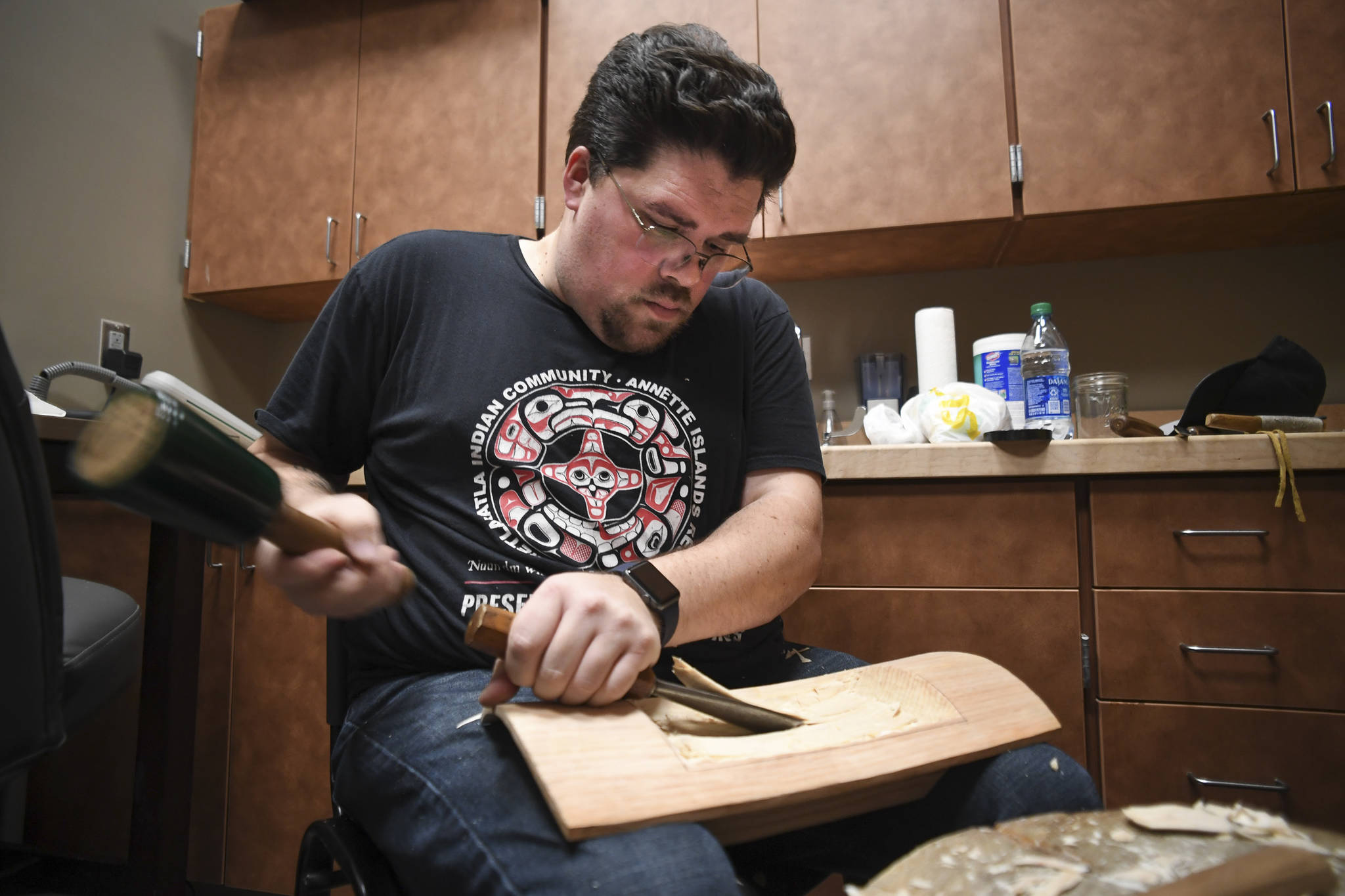David Robert Boxley has been carving since he was six years old.
As the son of renowned formline artist David A. Boxley, the younger Boxley spent his youth immersed in Tsimshian art and culture. In an interview with the Empire, Boxley said that he knew what he wanted to do from a young age.
“I could have done better in school, I’m capable…but I just wanted to draw in the back of class,” Boxley said with a laugh. “My dad’s a carver, and I grew up carving. At this point, it’s just who I am. I often tell people I am what I do, and I do what I am.”
Boxley created one of the bronze totems in front of the Walter Soboleff Building in downtown, and with his father helped to construct the Shuká Hít clan house front there.
Boxley’s work takes him to schools around the state where he teaches children about Northwest Coast art. He said sharing one’s cultural identity was an important thing to teach, and while every student may not become an artist, for the few who do, he hopes to see them pursue their passion.
“While all human beings can make art, not every human being is an artist, just like how not everyone is a mathematician or an engineer, or a singer,” Boxley said. “When it comes to whether someone really wants it, you just wait for them to kinda show up and then hopefully they’ll apprentice with somebody and keep it going.”
Boxley is in Juneau this week as the Sealaska Heritage Institute’s artist in residence. On weekends and in the evenings he’s teaching a class in intermediate and advanced formline. During the day, he can be found carving in SHI’s Delores Churchill studio near the lobby of the Walter Soboleff building.
While in Juneau, Boxley is making a feast tray out of a piece of alder wood. It’s a long, hollowed-out piece of wood that sits across the lap while you eat.
Asked why he chose to make the item, “I had the wood,” he said laughing.
“I hadn’t made one in a while, and I thought, this week, being here, it was a good opportunity for me to make what I wanted to make,” Boxley said. “There’s a certain satisfaction knowing that I’m continuing on something that’s been done for 10,000 years before me.”
On Monday, he was using an elbow adze, a curved tool used for shaping pieces of wood. The adze is a traditional tool of the Northwest Coast but almost every society has had some version of the tool at some point, Boxley said.
Northwest Coast art was on par with that of ancient Egypt or Greece, Boxley said, in terms of its cultural sophistication and quality of work. Formline, according to Boxley, is somewhat strict in its rules, but once you have enough understanding of its rules, you can make anything.
“Our two-dimensional art form is a system of a very few certain shapes and then bits and pieces of those shapes, and they’re put together in a very specific series of ways to build two-dimensional designs,” Boxley said.
While those individual shapes don’t always have specific meaning, there are specific rules to how and why things go where they do, Boxley said.
“It’s not just shapes thrown wherever, so it’s not necessarily free expression,” he said. “Our culture here on the Northwest Coast — Tlingit, Haida, Tsimshian — are somewhat strict in how they function, our ceremonies and such, and our art reflects that in a certain way.”
But with enough research, Boxley said, artists can learn to create whatever you want.
“By studying the old pieces you internalize how they work, what an image can look like,” he said. “I’ve got t-shirts that are super-hero in formline. So you can do anything once you know the rules.”
• Contact reporter Peter Segall at 523-2228 or psegall@juneauempire.com.

